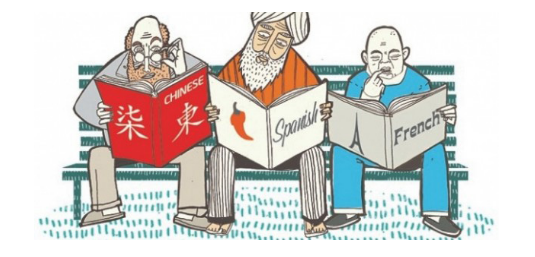As a Patient Advocate at a city health center, I am responsible for assisting patients with each step of applying to and receiving medications from Patient Assistance Programs (PAP). Patients who enroll in PAP are often times uninsured and receiving little to no income. Each day, I become more aware of just how many barriers stand in the way of these already disadvantaged patients’ ability to receive medical care.

http://blogs.jpmsonline.com/wp-content/uploads/2015/02/language-barriers...
A couple months ago, I was sorting through medications that had been waiting to be picked up since before my service term. I noticed that one patient had not been contacted with a reminder in a while. The file noted that the patient only spoke Spanish and that her phone had been disconnected for several months. Because she was inaccessible by phone, a letter had been sent out to remind her to pick up her medication. I figured she had probably forgotten about her medication and just needed another reminder to pick it up, so I printed out another letter and mailed it her way. Still, no luck. After about a month, the medication was still waiting in the cabinet.
After getting through all the work of applying and enrolling the patient in the program, it seemed silly that the only step left was for her to pick up her medication. I wondered what else I could do to get my patient her medication. Since the letter hadn’t worked, I thought the patient might have moved away and become completely inaccessible. In this case, it would be almost impossible to get the patient her medication unless she came in or contacted the health center herself. Not wanting to leave it at that, I decided to give it another shot, this time sending her a letter written in Spanish. Knowing no Spanish, I copy and pasted the letter written in english into Google Translate. Then I asked a Spanish speaking friend to look it over and smooth out any of the kinks and mistranslations. I sent the letter hoping for the best. When less than a week later, a small woman came in clutching the letter in hand, I was relieved. I gave her the medication and told her I was looking forward to seeing her again in three months. She smiled, said thank you, and walked away.
Looking back, I could have thought to translate the letter the first time. I should not have hoped that keywords like the name of her medication and health center would have been enough for her to understand that she needed to come get her medication. A simply laziness of thought was the reason this woman did not get her medication until several months later. There are so many steps along the way where a patient can be lost due to barriers to care. I’m glad that I was ultimately able to reach this patient, and will be more vigilant and thoughtful when trying to help my patients in the future. As a Patient Advocate, it’s my job to catch these barriers and do what I can to address them. When I see my patients struggle with hardships that seem enormously difficult, it’s encouraging to know that even just a small effort on my part can help the patient in a sizable way.

This blog post was written by NHC Philadelphia member Florence Ma.
Flo serves as a Patient Advocate at Philadelphia Department of Public Health Ambulatory Health Services - Health Center 4.
